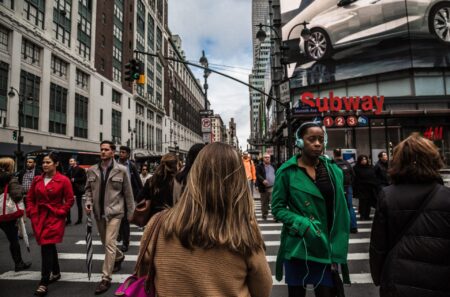Curious as to whether herd immunity against the coronavirus disease 2019 (COVID-19) might slow the spread of the disease? Understand how herd immunity works and what experts are saying about its potential impact on the COVID-19 pandemic.
Why is herd immunity important?
Herd immunity occurs when a large portion of a community—the herd—becomes immune to a disease, making the spread of disease from person to person unlikely. As a result, the whole community becomes protected, not just those who are immune.
Often, a percentage of the population must be capable of getting a disease in order for it to spread. This is called a threshold proportion. If the proportion of the population that is immune to the disease is greater than this threshold, the spread of the disease will decline. This is known as the herd immunity threshold.
What percentage of a community needs to be immune in order to achieve herd immunity? It varies from disease to disease. The more contagious a disease is, the greater the proportion of the population that needs to be immune to the disease to stop its spread. For example, the measles is a highly contagious illness. It’s estimated that 94 percent of the population must be immune to interrupt the chain of transmission.
How is herd immunity achieved?
There are two paths to herd immunity for COVID-19: vaccines and natural infection.
Vaccines. A vaccine for the virus that causes COVID-19 would be an ideal approach to achieving herd immunity. Vaccines create immunity without causing illness or resulting complications. Herd immunity makes it possible to protect the population from a disease, including those who can’t be vaccinated, such as newborns or those who have compromised immune systems. Using the concept of herd immunity, vaccines have successfully controlled deadly contagious diseases such as smallpox, polio, diphtheria, rubella and many others.
Reaching herd immunity through vaccination sometimes has drawbacks, though. Protection from some vaccines can wane over time, requiring revaccination. Sometimes people don’t get all of the shots they need to be completely protected from a disease.
In addition, some people may object to vaccines because of religious objections, fears about the possible risks or skepticism about the benefits. People who object to vaccines often live in the same neighborhoods or attend the same religious services or schools. If the proportion of vaccinated people in a community falls below the herd immunity threshold, exposure to a contagious disease could result in the disease quickly spreading. Measles has recently resurged in several parts of the world with relatively low vaccination rates, including the United States. Opposition to vaccines can pose a real challenge to herd immunity.
Natural infection. Herd immunity can also be reached when a sufficient number of people in the population have recovered from a disease and have developed antibodies against future infection. For example, those who survived the 1918 flu pandemic were later immune to infection with the H1N1 flu, a subtype of influenza A. During the 2009-10 flu season, H1N1 caused the respiratory infection in humans that was commonly referred to as swine flu.
However, there are some major problems with relying on community infection to create herd immunity to the virus that causes COVID-19. First, it isn’t yet clear if infection with the COVID-19 virus makes a person immune to future infection.
Research suggests that after infection with some coronaviruses, reinfection with the same virus—though usually mild and only happening in a fraction of people—is possible after a period of months or years. Further research is needed to determine the protective effect of antibodies to the virus in those who have been infected.
Even if infection with the COVID-19 virus creates long-lasting immunity, a large number of people would have to become infected to reach the herd immunity threshold. Experts estimate that in the U.S., 70 percent of the population—more than 200 million people—would have to recover from COVID-19 to halt the epidemic. If many people become sick with COVID-19 at once, the health-care system could quickly become overwhelmed. This amount of infection could also lead to serious complications and millions of deaths, especially among older people and those who have chronic conditions.
How can you slow the transmission of COVID-19?
Until a COVID-19 vaccine is developed, it’s crucial to slow the spread of the COVID-19 virus and protect individuals at increased risk of severe illness, including older adults and people of any age with underlying health conditions.To reduce the risk of infection:
- Avoid large events and mass gatherings.
- Avoid close contact (within about 6 feet) with anyone who is sick or has symptoms.
- Stay home as much as possible and keep distance between yourself and others (within about 6 feet) if COVID-19 is spreading in your community, especially if you have a higher risk of serious illness. Keep in mind some people may have the COVID-19 virus and spread it to others, even if they don’t have symptoms or don’t know they have COVID-19.
- Wash your hands often with soap and water for at least 20 seconds, or use an alcohol-based hand sanitizer that contains at least 60 percent alcohol.
- Wear a cloth face covering in public spaces, such as the grocery store, where it’s difficult to avoid close contact with others, especially if you’re in an area with ongoing community spread. Only use nonmedical cloth masks—surgical masks and N95 respirators should be reserved for health-care providers.
- Cover your mouth and nose with your elbow or a tissue when you cough or sneeze. Throw away the used tissue.
- Avoid touching your eyes, nose and mouth.
- Avoid sharing dishes, glasses, bedding and other household items if you’re sick.
- Clean and disinfect high-touch surfaces, such as doorknobs, light switches, electronics and counters, daily.
- Stay home from work, school and public areas if you’re sick, unless you’re going to get medical care. Avoid public transportation, taxis and ride-sharing if you’re sick.







